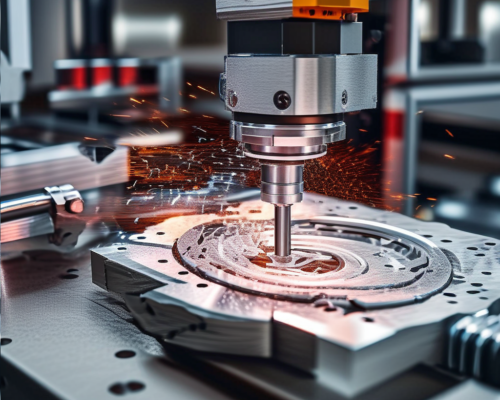Introduction
Computer Numerical Control (CNC) machining is a cutting-edge manufacturing process that uses computer technology to control machine tools. This advanced technology has become an integral part of various industries, offering precision, efficiency, and versatility when it comes to manufacturing custom parts and components .
Working Principles of CNC Machining
CNC machining operates on the principles of computer-controlled cutting tools to remove material from a workpiece. The process begins with a CAD (Computer-Aided Design) model, which is then converted into G-code using CAM (Computer-Aided Manufacturing) software. This G-code is a set of instructions that the CNC machine follows to shape the material into the desired part .
Capabilities of CNC Machining
CNC machines are capable of producing parts with tolerances within a few microns, ensuring parts meet exact specifications. They can handle a variety of materials, including metals, plastics, wood, foam, and composite materials. The versatility of CNC machining allows it to cater to different material requirements and specifications .
Types of CNC Machines
CNC machining encompasses a variety of machine tools, including lathes, mills, routers, grinders, plasma cutters, and laser cutters. Each type of machine has specific capabilities and applications, making CNC machining a versatile process suitable for a wide range of industries .
Benefits of CNC Machining
- Precision: CNC machines can produce parts with exceptional accuracy.
- Efficiency: Automated processes reduce production time, increasing throughput.
- Complexity: CNC machines can create parts with complex geometries.
- Consistency: Computer programs ensure each part is identical to the last.
- Reduced Labor: Less manual labor is required, reducing the risk of human error .
Case Study: Aerospace Component Manufacturing
A leading aerospace manufacturer faced the challenge of producing a complex fuel nozzle for a new aircraft model. The nozzle had to meet stringent tolerances and be made from Inconel 718, a superalloy known for its strength and heat resistance.
Solution
The company turned to CNC machining, using a 5-axis CNC mill to produce the nozzle. The 5-axis capability allowed for complex contours to be machined with precision. The process involved designing the part in CAD software, converting the design into G-code with CAM software, and then machining the part from a block of Inconel 718.
Results
The CNC machining process successfully produced the fuel nozzle with the required precision and surface finish. The use of CNC technology reduced the production time by 30% compared to traditional methods and ensured consistency in part quality.
Conclusion
CNC machining is a critical technology in modern manufacturing, offering precision, efficiency, and consistency. As the manufacturing industry continues to evolve, CNC machining will remain at the forefront of innovation, driving the production of high-quality components across various sectors.
The Future of CNC Machining
The future of CNC machining is bright, with advancements in automation, digitalization, and sustainability shaping the industry. As technology progresses, CNC machines will become more autonomous, capable of handling more complex processes, and operate with greater production speed and efficiency. The integration of AI and machine learning promises even more precision and efficiency, while sustainable practices will make CNC machining more eco-friendly, reducing waste and energy consumption.
Final Thoughts
CNC machining stands as a testament to human ingenuity and technological advancement. As industries continue to evolve, so will CNC machining, ensuring it remains at the forefront of manufacturing for years to come. Whether it’s producing intricate parts for aerospace or durable components for automotive applications, CNC machining delivers the precision and quality that the modern world demands.

